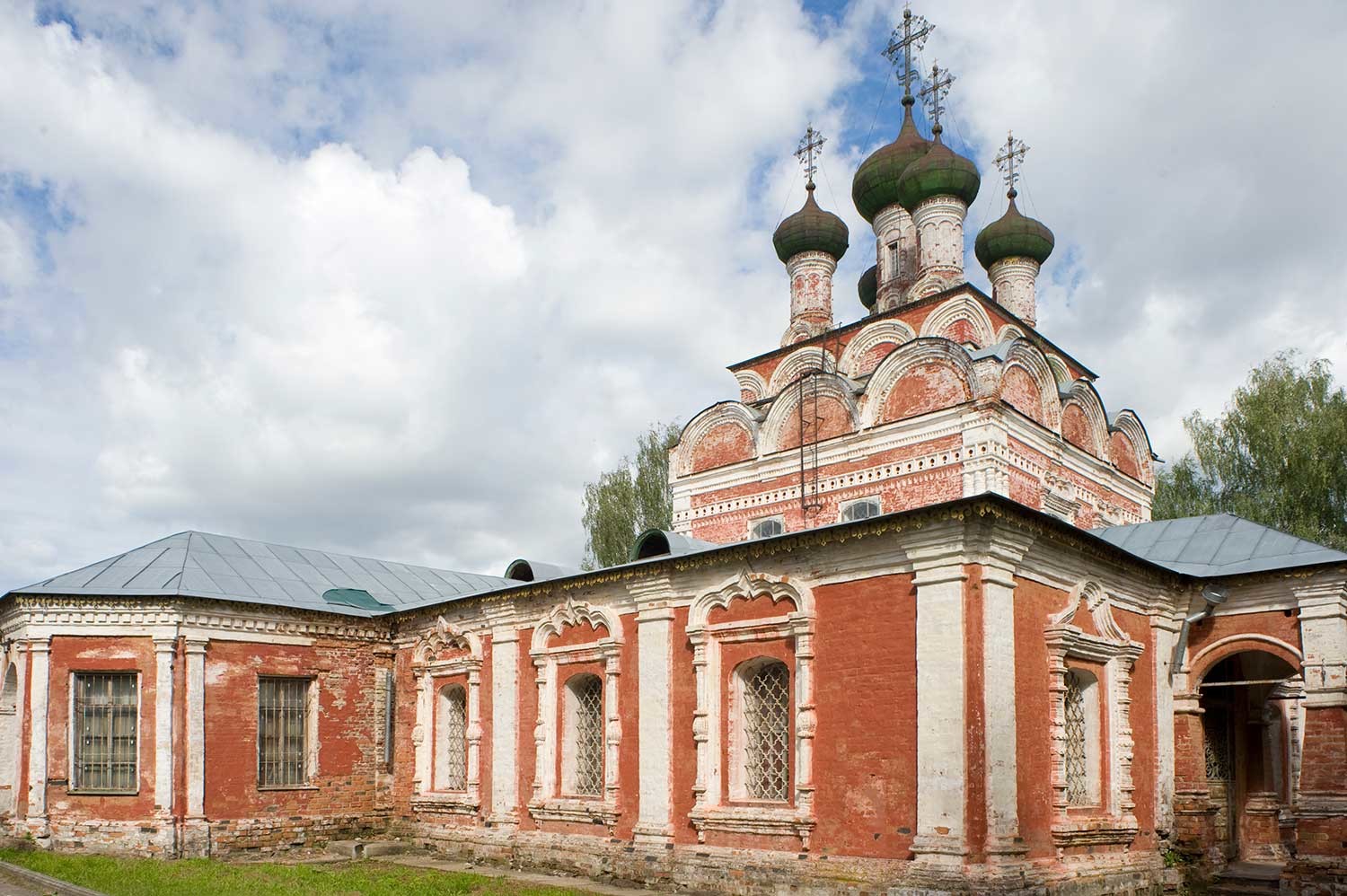
Ostashkov. Trinity Cathedral. West view. August 24, 2016
William BrumfieldAt the beginning of the 20th century, the Russian chemist and photographer Sergei Prokudin-Gorsky developed a complex process for vivid color photography (see box text below). His vision of photography as a form of education and enlightenment was demonstrated with special clarity through his images of architectural monuments in the historic sites throughout the Russian heartland.
In 1908, Prokudin-Gorsky arranged screen showings of his color images to various groups in St. Petersburg, including members of the imperial court and the State Duma (parliament). After a meeting with Emperor Nicholas II in May 1909, Prokudin-Gorsky’s project received official support from the Ministry of Transportation, which facilitated his photography along Russia’s rail and waterways.

Trinity Cathedral. Southwest view. Early summer 1910
Sergei Prokudin-GorskyIn May 1910, Prokudin-Gorsky continued his work in the Volga River basin with a trip to Ostashkov, located on a spit of land extending into Lake Seliger to the south of the monastic community at Nilova Pustyn, located in modern-day Tver Province.
The first references to a Russian settlement near the site date to the late 14th century. At that time, the settlement was known as “
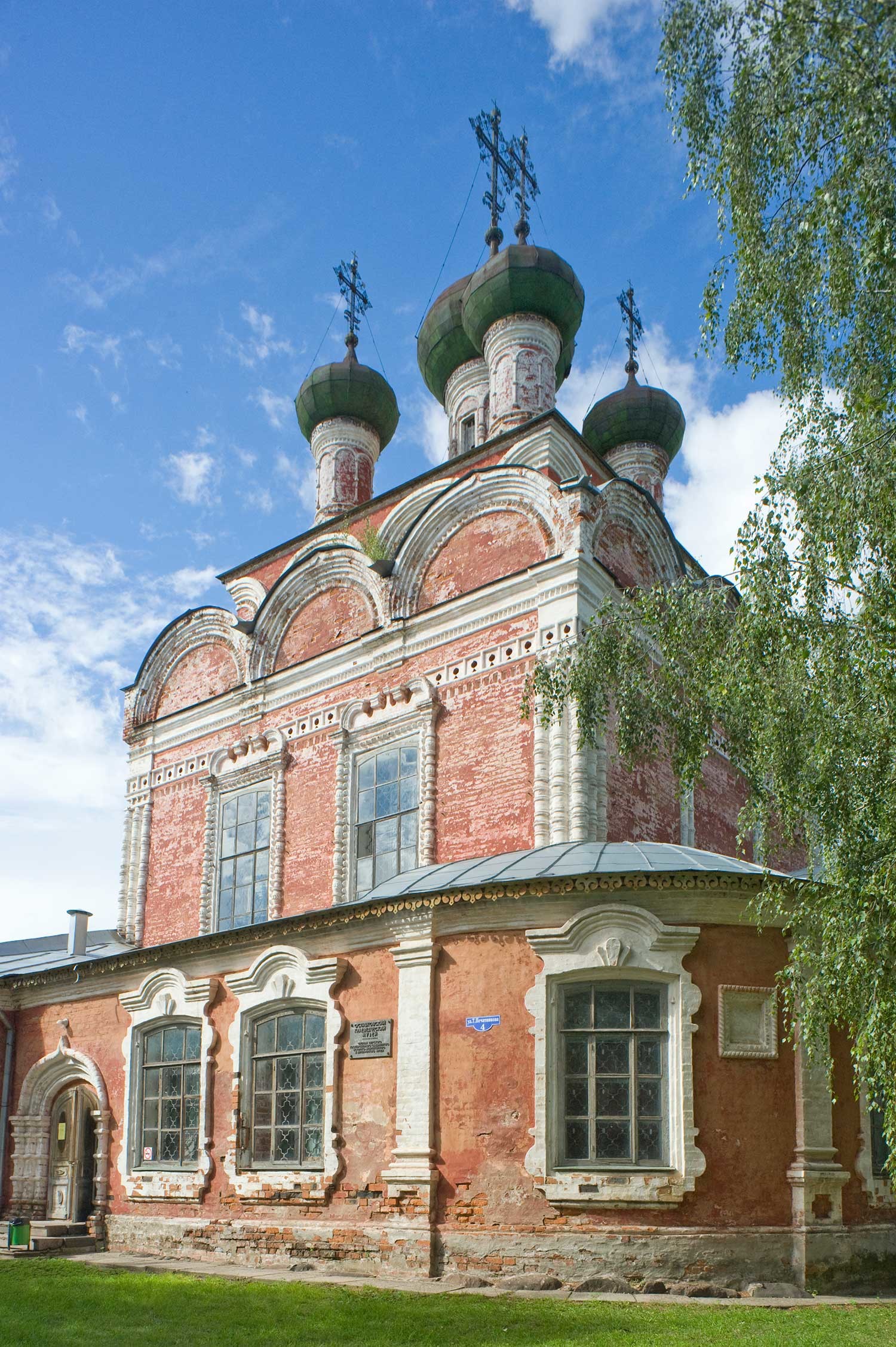
Trinity Cathedral. Southeast view. August 24, 2016
William BrumfieldMedieval Ostashkov benefited from ties to the church hierarchy in Moscow and to the powerful St. Joseph Volotsky Monastery near Volokolamsk, which was granted privileges in the town as early as 1500. The two parts of town were designated “Patriarch’s” and “St. Joseph’s”.
During the early 17th-century dynastic crisis known as the Time of Troubles, Ostashkov was occupied by rival factions in 1608 and 1609. Log fortifications erected within the settlement in 1587 were sufficiently strong to withstand a renewed Polish attack in 1610, but much of the town beyond the walls
Fortunately, Ostashkov soon recovered. Its role as a strategic border post and its location on a network of waterways between Veliky Novgorod to the northwest and the Volga River basin to the southeast led to robust economic growth in the 17th century. In addition, Lake Seliger gave the town rich source of fish.
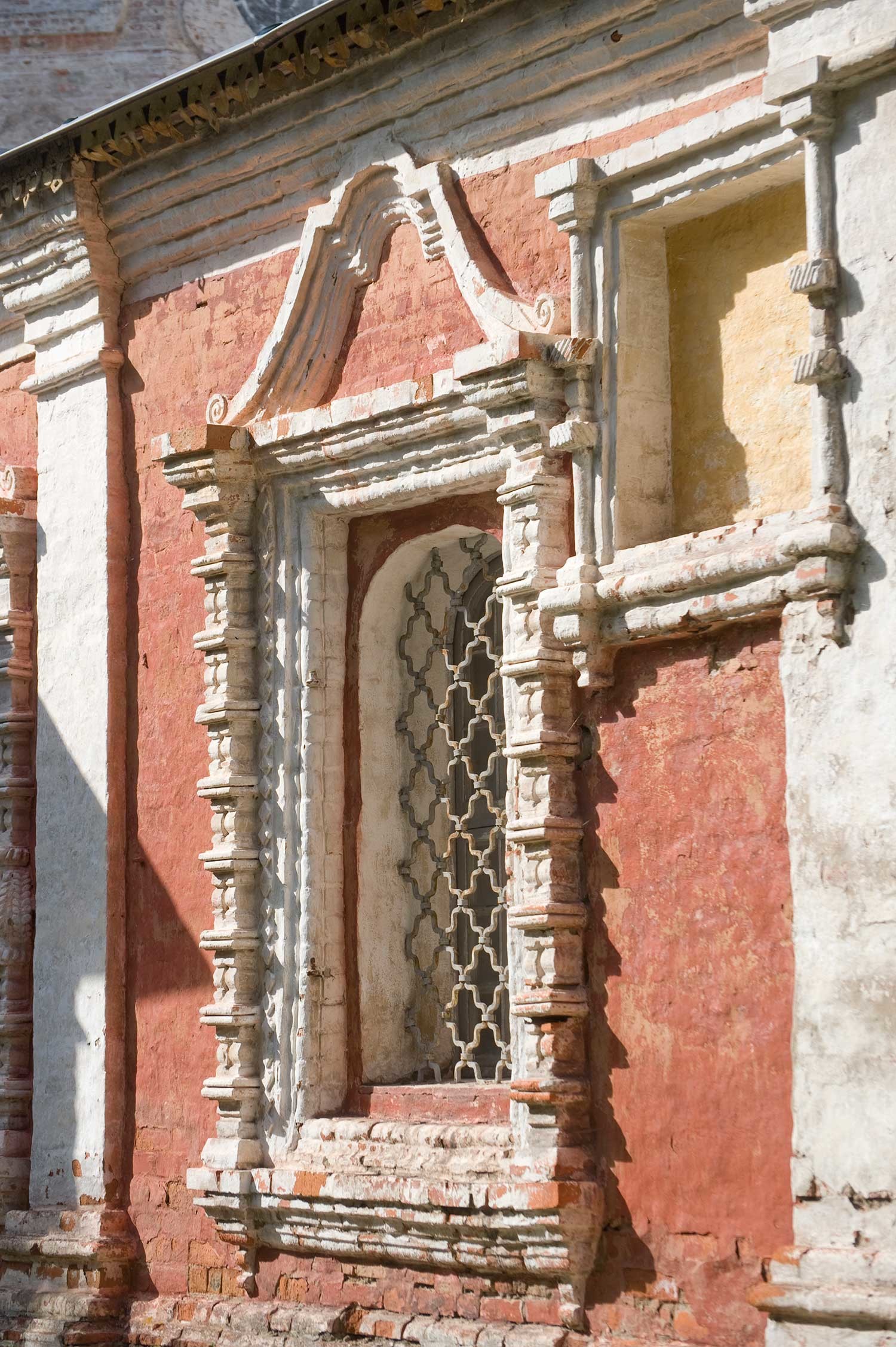
Trinity Cathedral. South gallery, window detail. August 24, 2016
William Brumfield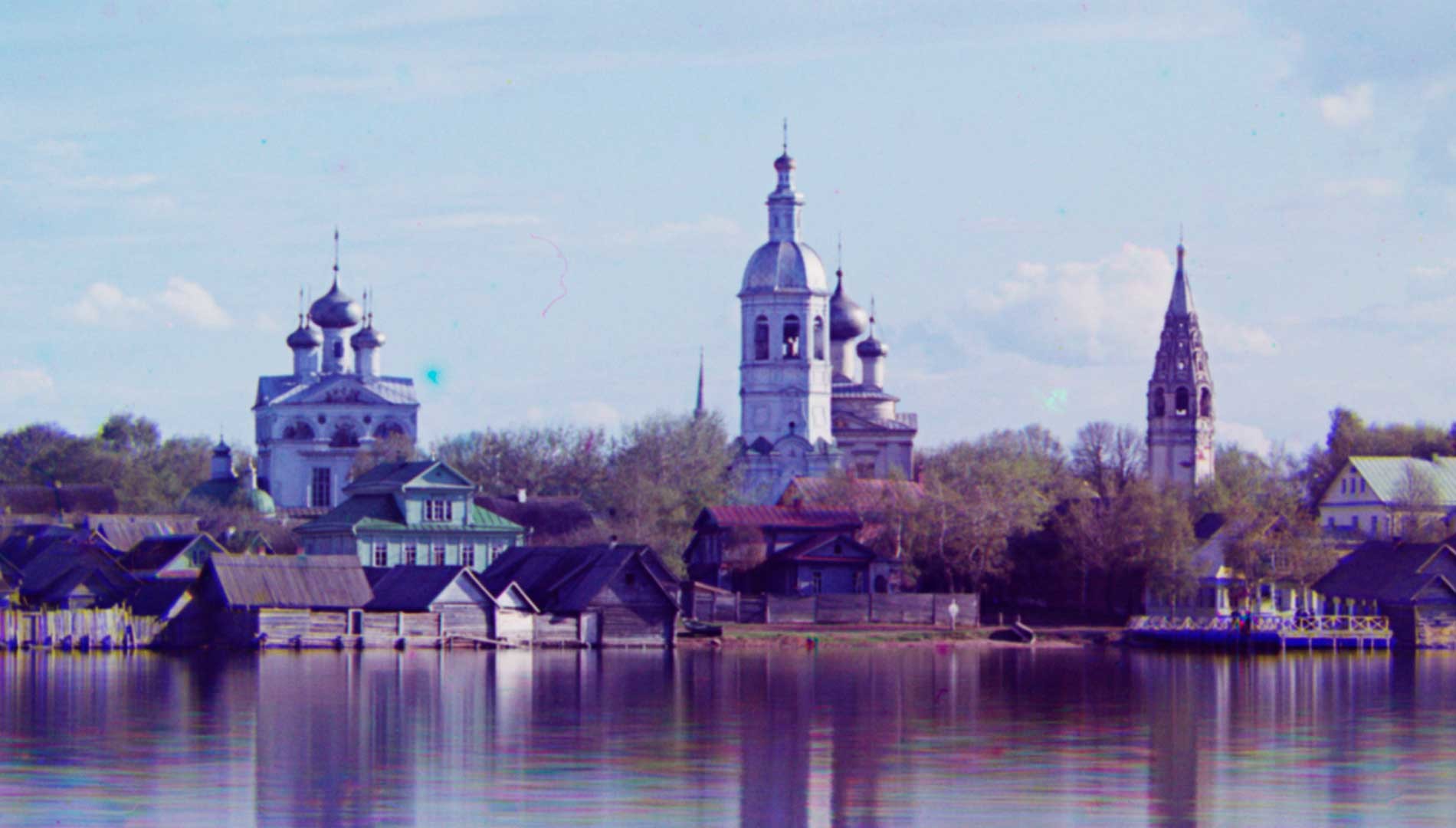
Ostashkov. Cathedral ensemble from Voroni Island. From left: Trinity Cathedral; bell tower; Resurrection Church; bell tower. Early summer 1910
Sergei Prokudin-GorskyMy photographs, taken in August 2016, give a detailed view of the central church ensemble, including two free-standing bell towers.
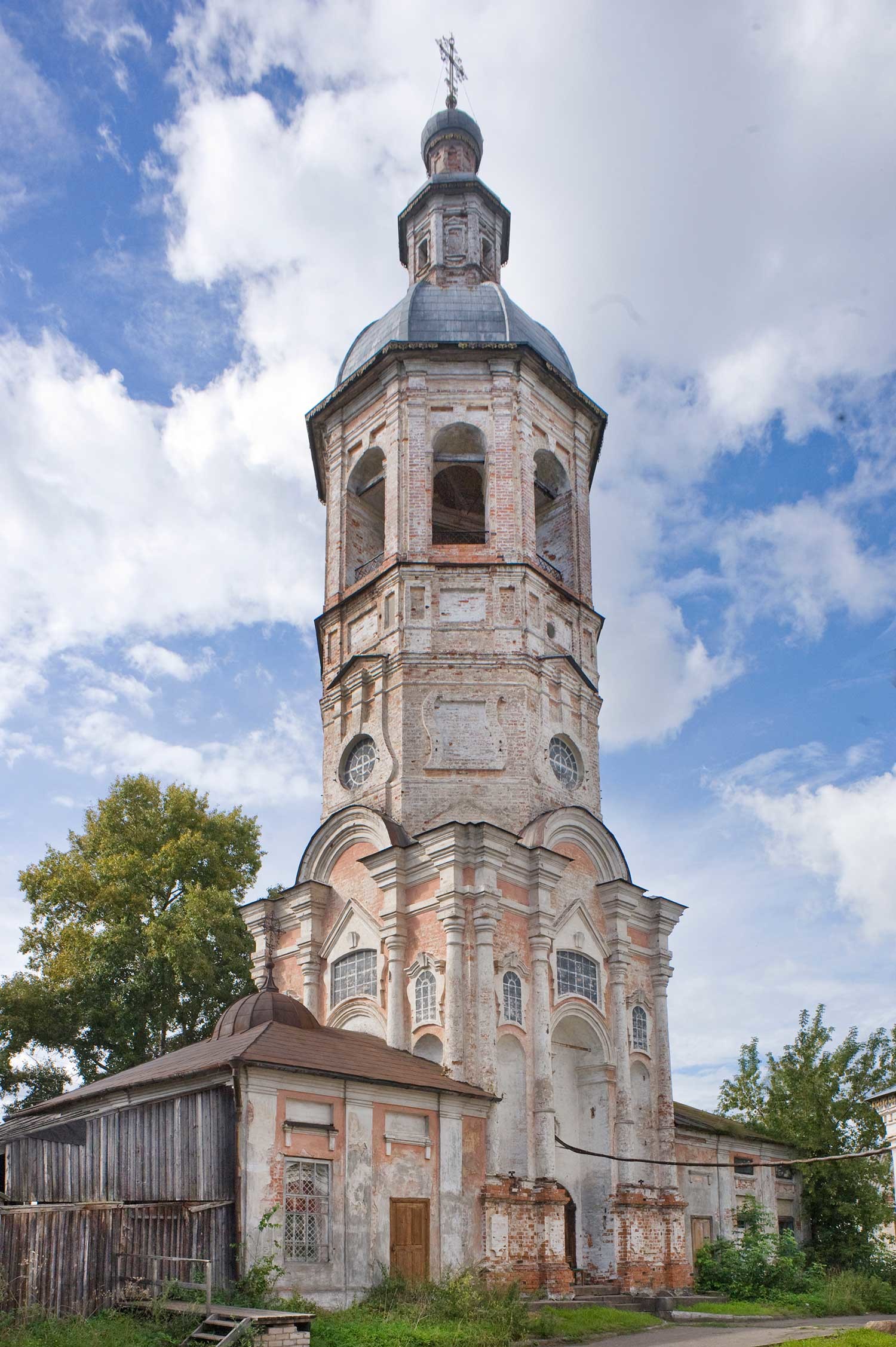
Bell tower of Trinity Cathedral. Southeast view. August 24, 2016
William BrumfieldThe more colorful of the two monuments was begun in 1685 and consecrated to the Holy Trinity in 1697. Originally the Trinity Cathedral displayed ornamentation typical of the late 17th century, with decorative window surrounds and niches. The five cupolas at the top rested on an array of semicircular decorative gables (
During the 18th and 19th centuries, the Trinity Cathedral was modified more than once, including a rebuilding of the roof with the neoclassical pediments visible in Prokudin-Gorsky’s photograph from the southwest. In the mid-18th century, the cathedral gained a one-story enclosed gallery (partially visible in his photograph) and four secondary altars dedicated to the St. Paraskeva Piatnitsa, the Okovetskii Icon, St. George and St. Nicholas.
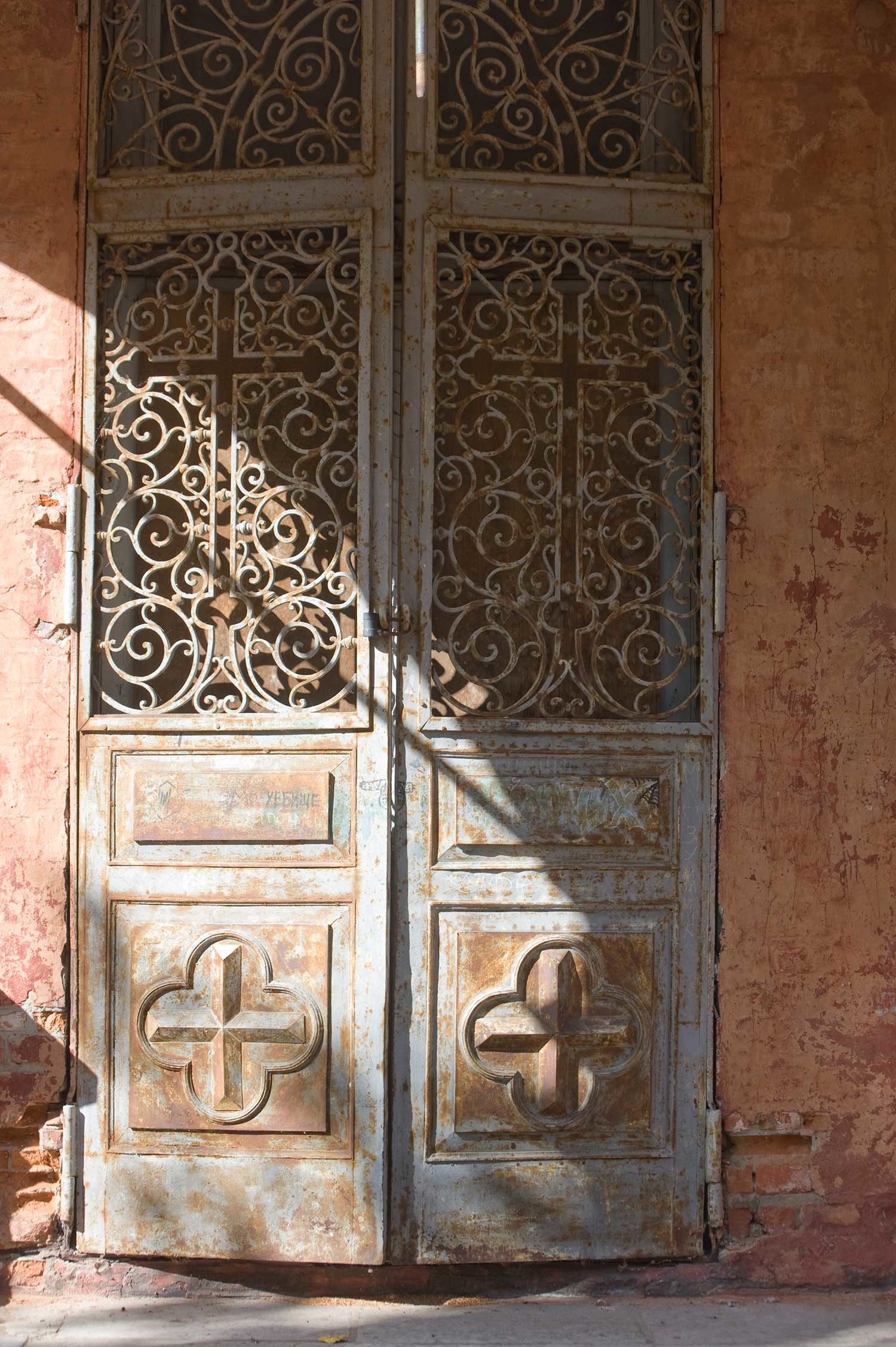
Trinity Cathedral. South gallery portal. August 24, 2016
William BrumfieldWork also began in the mid-18th century on a large free-standing bell tower just to the west of the Trinity Cathedral. Its style shows Baroque features typical in 18th-century provincial architecture. In 1854, a small treasury was added to the tower’s south façade, visible in my photograph. The Trinity Cathedral was closed in the Soviet period and eventually given to the local history museum, which occupies the premises to this day. The museum transfer enabled the preservation of much of the Baroque interior decoration.
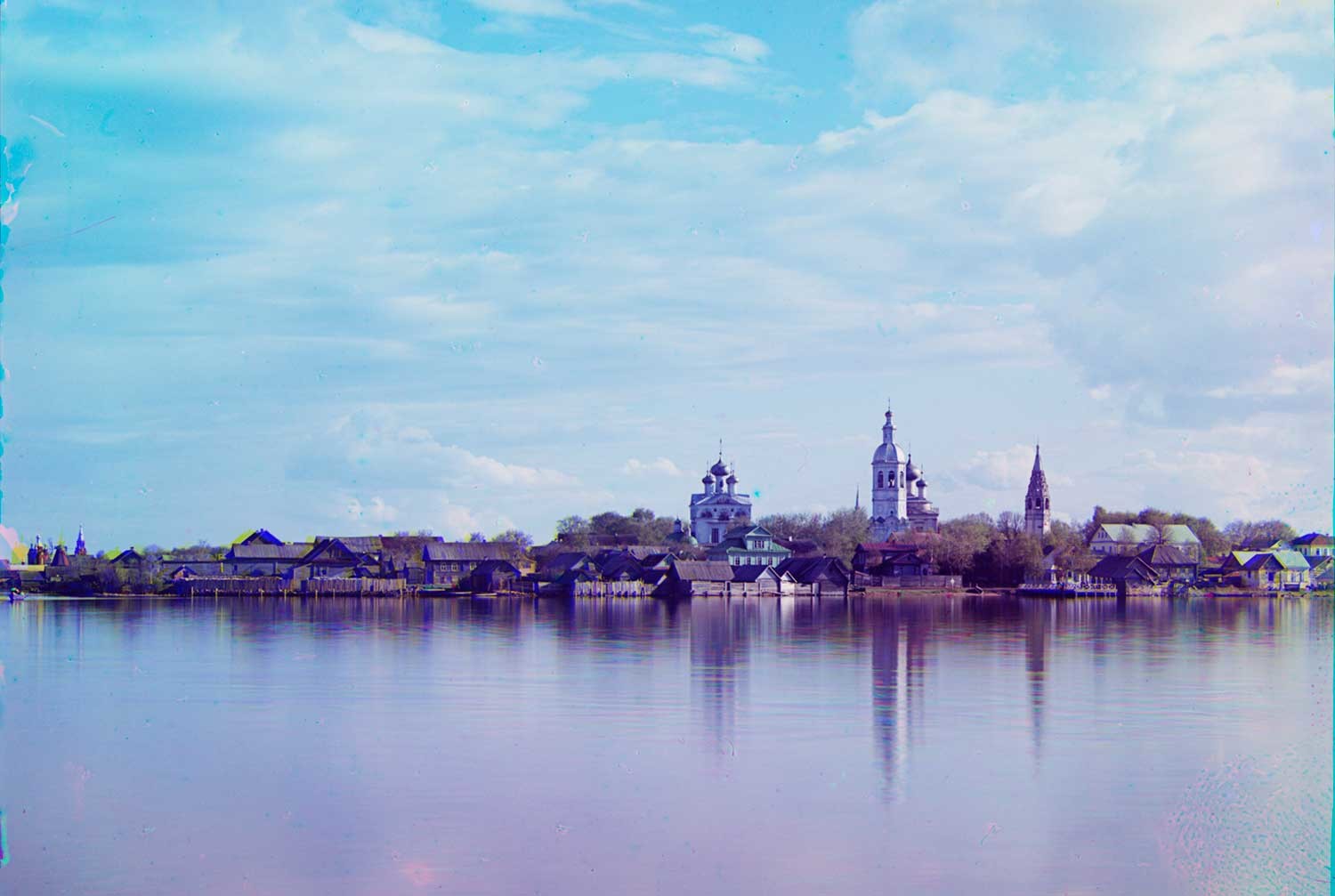
Ostashkov. View from Voroni Island. Center: Cathedral ensemble. Far left: Znamenskii Monastery. Early summer 1910
Sergei Prokudin-GorskyIn the 1970s, a restoration supervised by Vladimir Yakubeni returned the exterior of the Trinity Cathedral to what was considered its original form. Of special interest is the roofline, which regained its two rows of festive
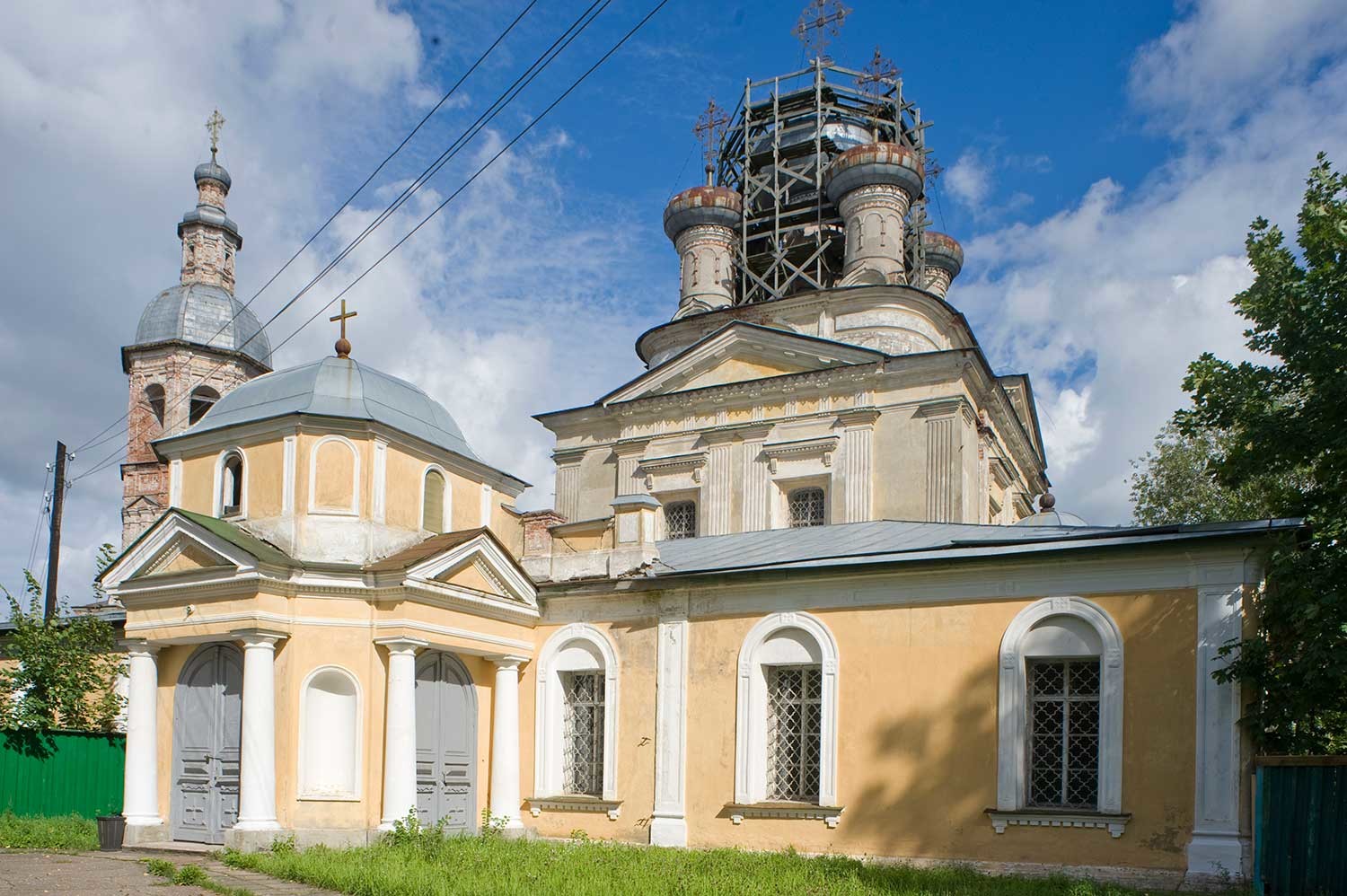
Resurrection Church. West view. August 24, 2016
William BrumfieldThe nearby Resurrection Church, located just to the southwest of the Trinity, was begun slightly earlier, in 1677, with the support of the St. Joseph Volotsky Monastery. Consecrated in 1689, the church had secondary altars dedicated to the Nativity of John the Baptist, St. Joseph Volotsky, the Dormition of the Virgin and the Nativity of Christ.
Like its neighbor, the Resurrection Church (which is sometimes referred to as a cathedral) was a relatively simple cuboid structure crowned with
During the Soviet period, the Resurrection Church was less fortunate than the Trinity. It was converted to a mechanical workshop, yet much of the interior wall ornamentation improbably survived. The main altar has been reconsecrated, although the workshop remained inside as of my visit in 2016. It should be noted that the Resurrection Church and the two bell towers appear in Prokudin-Gorsky’s work only in his distant view from
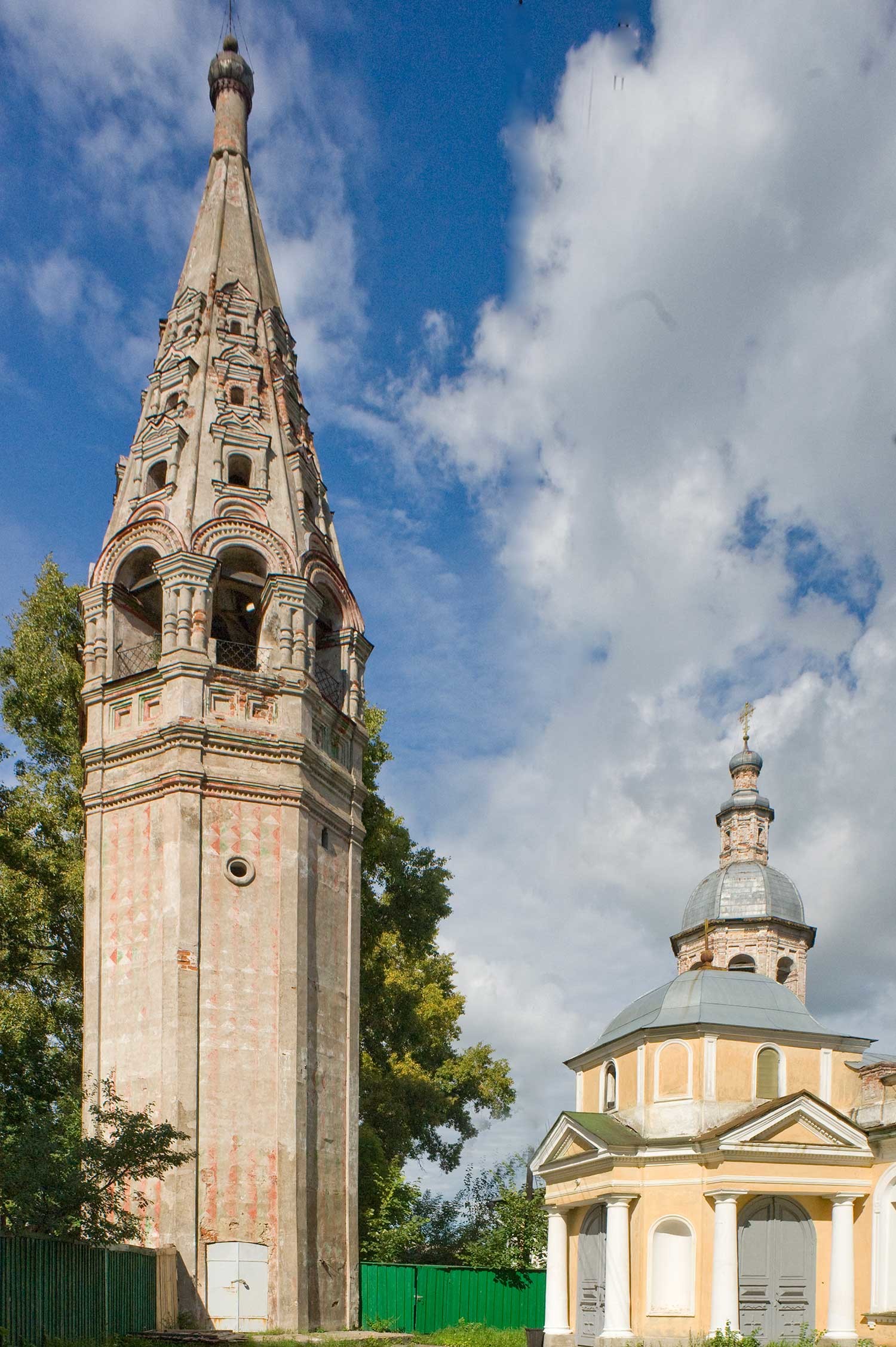
Bell tower of Resurrection Church, south view. Right: west porch of Resurrection Church with upper tier of Trinity Cathedral bell tower in background. August 24, 2016
William BrumfieldOstashkov has lost much of its economic base. Since 1989, the population has decreased by over a third. On the positive side, the Orthodox Church has quietly embarked on restoration efforts, and the region’s St. Nilus Monastery has created an increase in tourism. Enormous work is still required to restore the town’s central architectural ensemble.
In the early 20th century the Russian photographer Sergei Prokudin-Gorsky devised a complex process for color photography. Between 1903 and 1916 he traveled through the Russian Empire and took over 2,000 photographs with the process, which involved three exposures on a glass plate. In August 1918, he left Russia and ultimately resettled in France with a large part of his collection of glass negatives. After his death in Paris in 1944, his heirs sold the collection to the Library of Congress. In the early 21st century the Library digitized the Prokudin-Gorsky Collection and made it freely available to the global public. A number of Russian websites now have versions of the collection. In 1986 the architectural historian and photographer William Brumfield organized the first exhibit of Prokudin-Gorsky photographs at the Library of Congress. Over a period of work in Russia beginning in 1970, Brumfield has photographed most of the sites visited by Prokudin-Gorsky. This series of articles will juxtapose Prokudin-Gorsky’s views of architectural monuments with photographs taken by Brumfield decades later.
Discover Russia with William Brumfield and Russia Beyond
If using any of Russia Beyond's content, partly or in full, always provide an active hyperlink to the original material.
Subscribe
to our newsletter!
Get the week's best stories straight to your inbox